What is GOOD design?
What do you want to be when you grow up? A doctor, teacher, fireman used to be the standard responses, but as the world’s needs evolve, so does how we meet them. Last Thursday we heard four women speak who have carved their own niches in the dynamic field of sustainable design. Sustainability is the capacity to endure (via wikipedia). It is maintaining life on earth, which in turn means preserving the earth and using its natural resources responsibly. Sustainable design addresses how to do that. It applies to all walks of life and is a collective effort. Everyone benefits, but not everyone partakes. From reevaluating simple lifestyle choices to developing new sophisticated technologies, there is something that everyone can do to help.
The GOOD Design: Innovations in sustainability panel was hosted by The New York Women Social Entrepreneurs (NYWSE) and held at the Center for Architecture in NYC. The speakers included Deb Johnson, Founder and Director of the Pratt Design Incubator for Sustainable/Social Enterprise, Rita Saikali, Director of Outreach and Advocacy at Architecture for Humanity and a familiar face, Sheena Matheiken, Founder and Creative Director of the Uniform Project. That’s the abridged version of the intros delivered by moderator Emily Spivack, Director of Dowser and curator of Sentimental Value, a collection of stories about vintage clothing on eBay. Since sustainability is a growing concern across industries, newly devised ethical practices and planet friendly techniques are vetted everyday. There are certain things that penetrate and others that become obsolete. The speakers discussed specific cases and analyzed successes and failures from a smattering of real life examples. Below are a few highlights from the Q & A.
x. wasabipear
‘Take a bite’
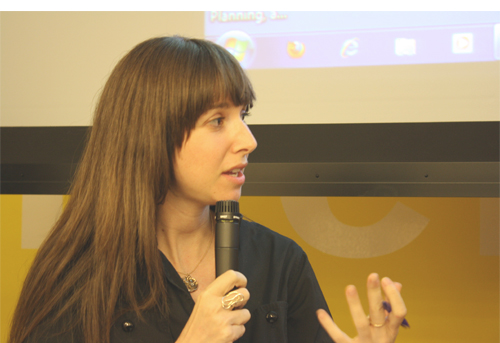 Emily Spivack, panel moderator.
Emily Spivack, panel moderator.
Q. Describe the idea behind Pratt’s Design Incubator.
Deb: The Design Incubator at Pratt is how we prevent the brilliant ideas in students’ portfolios from evaporating in the real world. One of the examples of the kind of ideas fostered in the incubator is ‘Domestic Aesthetic’ – a designer who uses local industrial waste stream as a production resource. There are literally dumpsters full of mahogany sitting around in Brooklyn, who knew?
(Mental note: Take a field trip to Pratt’s library to learn about more of these untapped local resources).
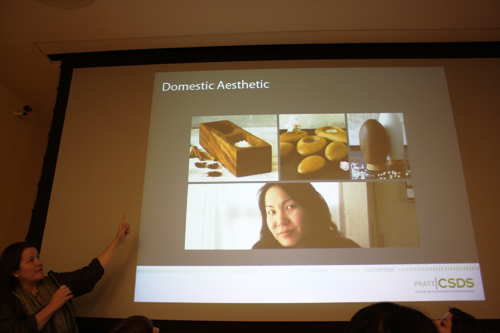 Deb Johnson
Deb Johnson
Q. Give an example of sustainable design working.
Sheena: I discovered a great instance of grey-water recycling on my visit to Tokyo a few years ago – a brilliant example of design working to decrease water waste. The product was a sink-toilette combo that uses water from the sink to flush the toilette. The sink was supported on top of the flush, facing the opposite side of the toilette, so it doesn’t feel like the same object when in use– it’s both sleek and smart.
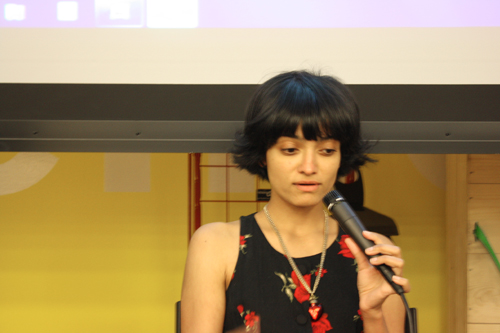 Sheena Matheiken
Sheena Matheiken
Q. Give an example of how sustainable design addresses a social issue.
Rita: Architecture for Humanity undertook the renovation of the Park Slope Women’s Shelter, a safe haven for homeless women. When we designed the kitchen, we found that women weren’t using the entire space or the tools, because they were not used to sharing communal spaces and possessions. To make the kitchen user-friendly, we created outlines on the walls indicating where the utensils would go, essentially turning the walls into instructional guides for the women.
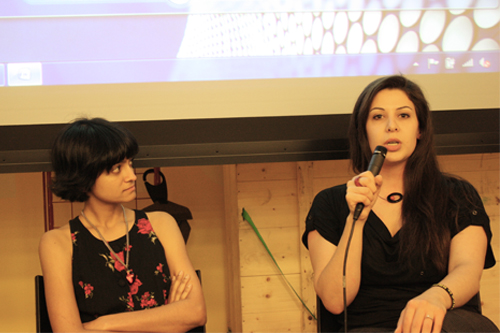 Rita Saikali
Rita Saikali
Q. On the topic of socially conscious design, what have you learnt about fundraising online through the Uniform Project?
Sheena : Bringing fun to philanthropy and triggering that genuinely good feeling you get when you create positive impact was one of the key motivations behind the U.P. We try to make that playfulness an essential part of our projects and a core component of our business model. This way the act of ‘helping’ isn’t impersonal or removed or guilt based. It’s not about contributing a portion of your profits, it’s about engaging on an intimate level and creating awareness in a way that allows people to really be a part of the change you are instigating. I’ve learnt that if you believe in the cause, keep the message simple and genuinely have fun with it, people will pay attention. During my 1 year dress challenge, we always tried to keep the dailies entertaining through regular tributes to cultural occurrences, punned titles, themed outfits etc. Some of our ideas even came from the community – like ‘LBD Fridays’ where U.P supporters around the world dressed up in Little Black Dresses to support our cause.
Q. Give an example of how sustainable design addresses a cultural issue.
Deb: The Design in Kind project developed a set of training tools for community health care workers in Uganda who were being trained to perform household visits. We designed illustrated cards for health care workers, to serve as cheat sheets that trigger their memory on the field. The nutritional cards, for example, were designed for different groups of the household, i.e., one for adult male, one for pregnant female, one for child, etc., each outlining the dietary needs of said group. We ended up having to redesign the cards, because we found that culturally, the men of the household always insisted that their own dietary needs would be the family norm in a food scarce society, making the other cards obsolete. Addressing these cultural and socio-economic design problems makes you examine your own global preconceptions.
Q. With so much noise around ‘green’ marketing these days, how can consumers decipher between what’s real and what’s actually good practice in sustainability?
Sheena: Consumers must recognize that they have more leverage than they think to demand the information they need regarding a product. To quote designer Katharine Hamnett, ‘Industries need to produce, but consumers don’t need to buy’. If consumers start demanding more transparency from all their favorite brands and products and insist on manufacturing details down to the root of the supply chain, then companies will be forced to become more ethical and transparent. If you are not sure about what you are reading on a content label, question it. Email them. Call them up. If you don’t get a timely and clear response, don’t buy the product. The more people pay attention, the more companies will learn that green-washing without backing it up with substance will ruin their brand and their business.
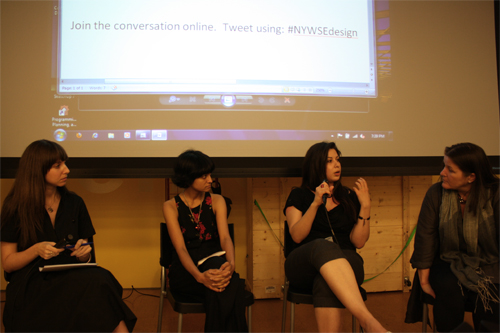
____________________________________________________________
Links and Resources
Pratt Design Incubator >
Architecture for Humanity >
Sentimental Value >
Dowser >
Cradle To Cradle : Remaking the way we make things >
Design in Kind >
____________________________________________________________
Comments